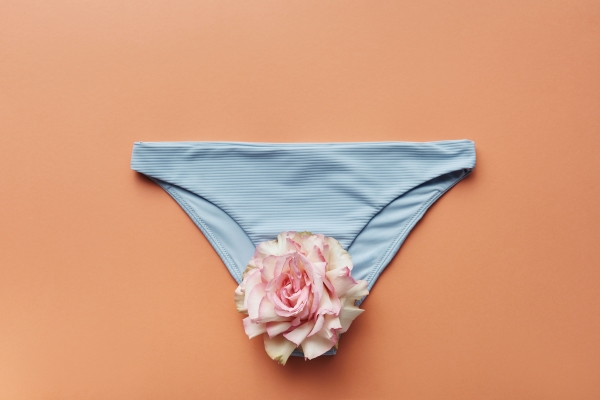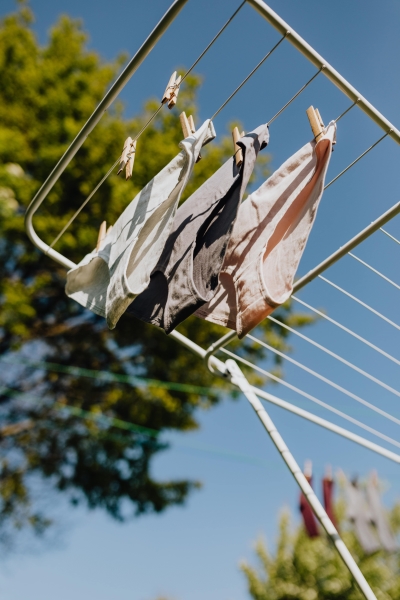Sense and Exotic Nature
From reasonable stays to va-boom undergarments, the historical backdrop of women's underwear styles is uncovering in a bigger number of ways than one. Sex, sexual orientation, class, profound quality, style - these subjects and more are to be found among the girdles, crinolines, stockings and pants of our legacy. This close connection among underwear and society, changing body shapes and designs is investigated in a show, at [London's Victoria and Albert Museum display uncovered a-brief-history-of-underwear/). Early underpants were about the outline that they made, and bodices were planned as an establishment to the external piece of clothing. The mostly boned stays in silk damask appeared here date from 1770 to 1790, and have a whalebone band across the chest. "It upgraded the stance," the presentation's caretaker Edwina Ehrman reveals to BBC Culture, "pushing the shoulders back and guaranteeing an upstanding carriage. Deportment was vital particularly among the high societies." (Credit: Silk damask, fixed with material, fortified with whalebone (back), Britain, 1770-1790 Victoria and Albert Gallery, London)

Work It
"In the seventeenth and eighteenth Hundreds of years, unblemished white cloth underpants signified decency," says Ehrman. "Amazing ranch style homes would have three pantries and complex frameworks of washing, drying and arranging." The washing routine was genuinely arduous – smalls were initially absorbed an antacid arrangement, beat and cleaned with cleanser and heated water, at that point bubbled, flushed and treated, wrung out, hung up to dry and afterward pressed. This cloth chemise, managed at the neck with a muslin ruffle and engraved in ink, goes back to 1851. (Credit: Cloth chemise, 1851, Victoria and Albert Historical center, London)
Shape shifters
The volume and flutiness of the crinoline implied the swing of the wearer's hips was emphasized – this English plan is made of cloth and spring steel, and dates from around 1871. Architects of the twentieth and 21st Hundreds of years, including Vivienne Westwood, Yohji Yamamoto and Jean Paul Gaultier, have as often as possible reevaluated and reworked the nineteenth Century crinoline. As Edwina Ehrman says: "Underwear and establishment pieces of clothing, for example, the bodice and crinoline have demonstrated especially tempting [to contemporary designers] in light of their close relationship with the body and suggestive and sexual potential." The article of clothing additionally undermined development, in any case, and a few ladies of the nineteenth Century, lobbying for a more liberated way of life, dismissed boned girdles, clamors and crinolines, contending that they harmed the inside organs as well as contorted the body's characteristic shape. The perilous crinoline was likewise exceptionally combustible and the reason for various mishaps – some subsequent in fatalities.(Credit: Confine crinoline, the 'Princess Louise Jupon Patent', c 1871, Victoria and Albert Exhibition hall, London)
Backsides up
How ladies should dress was fervently bantered in the nineteenth Century. In Denis Pellerin and Brian May's new book, Crinoline: Design's Most Heavenly Catastrophe, Edwina Ehrman writes in her Afterword: "Genuine worries about the actual perils of the crinoline and acclaim for its advantages were overlaid with a rich crease of vaudeville humor. Kid's shows and analysis zeroed in on the intensification of individual space it made and its subsequent potential for trickery and control, and the tantalizing unconventionality of its light structure." This clamor crinoline from around 1870 is made of horsehair woven with cloth – for additional bob. (Credit: Clamor, 1870 - 5, Victoria and Albert Historical center, London)

Hot at This Moment
At any rate a century prior to the attractive corsetry of Vivienne Westwood, Alexander McQueen, Agitator and others, the splendidly toned girdle was a certain fire hit. This hot-pink, silk glossy silk and whalebone bodice was planned around 1890-95, likely in England. Large numbers of the bodices of the late nineteenth Century were very prohibitive – some under 19 inches (48cm) in outline around the midsection, and they were a most loved piece of clothing in the "sassy delicate pornography postcards" of the late nineteenth Century, says Edwina Ehrman. "We will in general feel that the undergarment was advocated in light of the fact that it caused the abdomen to seem little, however I think it is more probable since it upgraded the hips and base." The author of 'London Tattle' of the Hampshire Broadcast noted, of intensely hued silk bodices: "They shape the structure so totally that a lady appears as though a bloom on a twisting tail without dismissing creative extents." (Credit: Girdle, 1890-1895, Victoria and Albert Historical center, London)
A Brief Look at Loading
Worn by Princess Alexandra, these weaved stockings date from around 1900, and were intended to be worn with low profile shoes. Edwina Ehrman says: "Princess Alexandra, the future Sovereign Alexandra, was generally respected for her excellence and fashion awareness. Stockings like this were in vogue, lavish and costly. At the point when worn by a lady of high status and good integrity like the future Sovereign, they would not draw in any rebuke." Soon it turned out to be progressively adequate for ladies to uncover their stocking lower leg in quest for exercises, for example, tennis and cycling. Also, by the 1920s "a brief look at loading" was done "stunning", as Cole Doorman brought up in his hit melodic Anything Goes. (Credit: Loading worn by Sovereign Alexandra, c1900, Victoria and Albert Historical center, London)
Agile Soul
The bust bodices of the mid twentieth Century were the most punctual manifestation of the brassiere, however it was not until the 1930s that the bra as far as we might be concerned today arose. This cotton-and-silk creation by John J Roussel was made in France. "The procedure made a delicately adjusted, normal profile," says Edwina Ehrman. "The materials and state of the bra mirror the female outline and agile, body-cognizant styles of the 1930s." The plan additionally reflected evolving society, as ladies needed lightweight, functional however beautiful underwear, that didn't require the assistance of a house cleaner to take on and off. (Credit: Brassiere of bobbin trim in cotton, planned by John J Roussel, France, 1930s, Victoria and Albert Historical center, London)
French Cut Panties Extravagant
French pants had gotten famous by the 1930s, and this silk-chiffon pair are carefully assembled and especially lavish – the weaved configuration portrays huntsmen chasing rabbits with hawks. "They were worn by Woman Betty Holman whose spouse was an ambassador in Baghdad from 1940-2," says Ehrman. In Woman Betty's book, Diaries of a Negotiator's Significant other, 1998, she reviews how she utilized them to break the ice with a gathering of Iraqi ladies with whom she shared no regular language: "I chose to pull up my skirts and show [them] to the women. They were excited and we as a whole got on very well after that. They demonstrated me what they wore, calico pants!" The most probable creator is Russian fine undergarments firm Hitrova, who planned unmentionables for the Duchess of Windsor. (Credit: Silk chiffon pants, perhaps Hitrovo, 1930s, The Imperial Structure and Galleries, Brighton and Hove)
Get Strapless Undergarments
From the 1940s onwards the appearance of nylon changed both the appearance and usefulness of ladies' underwear. It was another time – lightweight and hard-wearing, nylon underpants could be handily washed, at that point left to dribble dry with no requirement for pressing. This printed supporter belt was made by Charmereine in Paris in the last part of the 1950s. The producer Du Pont directed a study around the time that indicated how low maintenance textures were generally mainstream with ladies under 45 years old. As Edwina Ehrman puts it: "Youthful, style cognizant housewives who appreciated the fiber's work saving characteristics and its innovation." (Credit: Bra and suspender belt (detail) lilac botanical cotton and nylon, Charmereine, France, 1960s, Victoria and Albert Gallery, London)
The X Factor
"The support mirrors ladies' changing lives and the new accentuation on youth," says Edwina Ehrman of the V&A. Ads for this 1960s turquoise Minimal X support featured the opportunity the underwear permitted, announcing: 'Will not wrinkle, turn over or ride up'. The slogan was 'Xhilerating' and the commercials demonstrated young ladies jumping noticeable all around with appendages flung outwards. The Little X was made by Anne-Marie Lobbenberg for the English organization Outline, and is an early illustration of stretchy Lycra being utilized in underwear. Ehrman says: "Ladies architects have been liable for probably the best underwear styles and have been at the front line of plan advancement in the business since the nineteenth Century." (Credit: Nylon and lycra support, 1960s, Victoria and Albert Exhibition hall, London)
Body Talk
During the 1970s the bra was pervaded with new importance by the ladies' freedom development, some of whom ceremoniously consumed their bras as signifiers of the limitation of the male controlled society. Helen Newman picked rather to transform the bra into wearable craftsmanship, and was among the primary fashioners to make body form. She was impacted by crafted by Paco Rabanne just as African craftsmanship, and the piece, made with beaten brass and calfskin lined, was made for a 1970 presentation at the Ewan Phillips Display in London. (Credit: Brass bra planned and made by Helen Newman, 1970, Victoria and Albert Historical center, London)